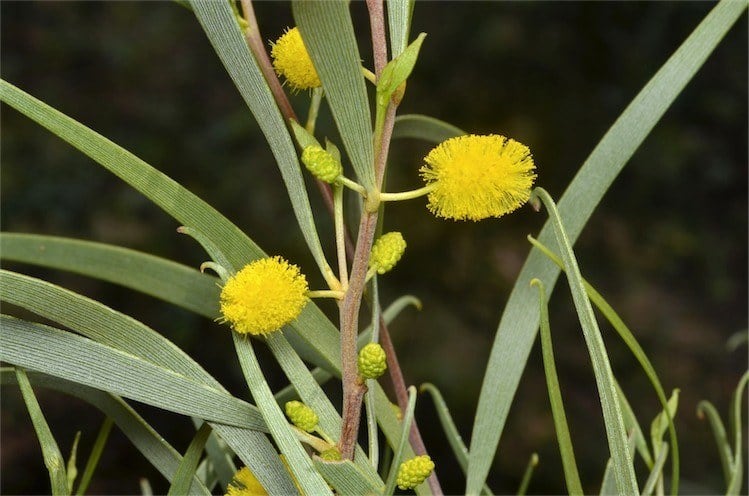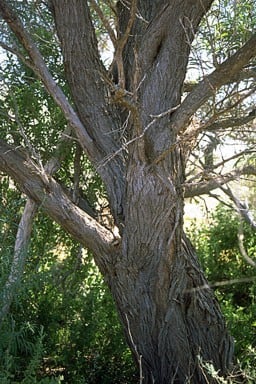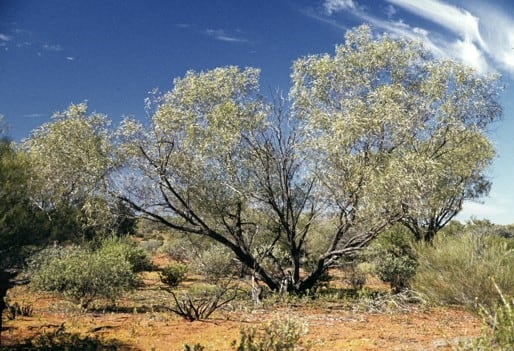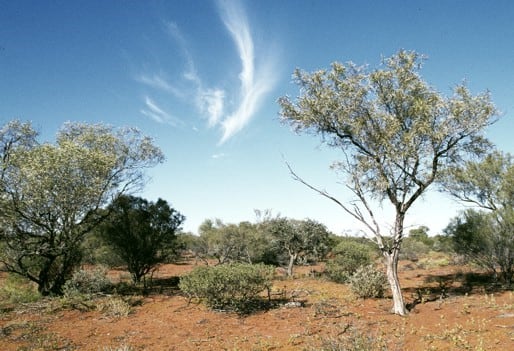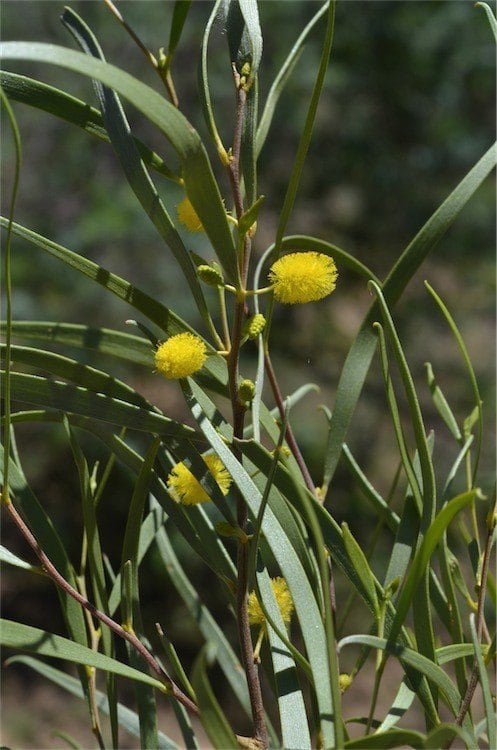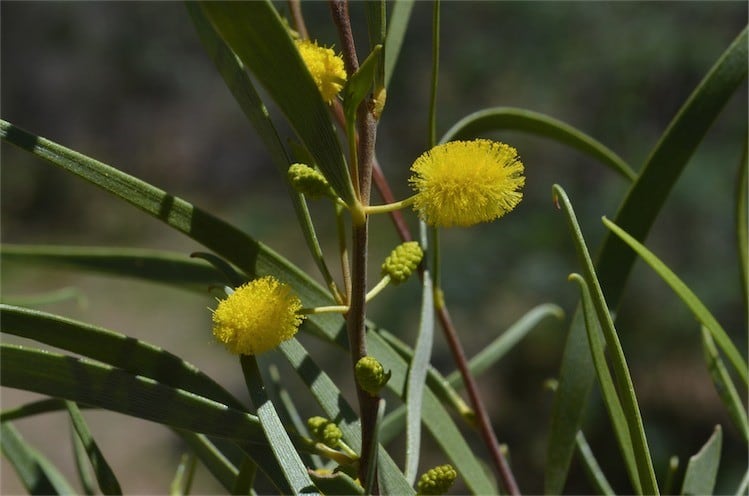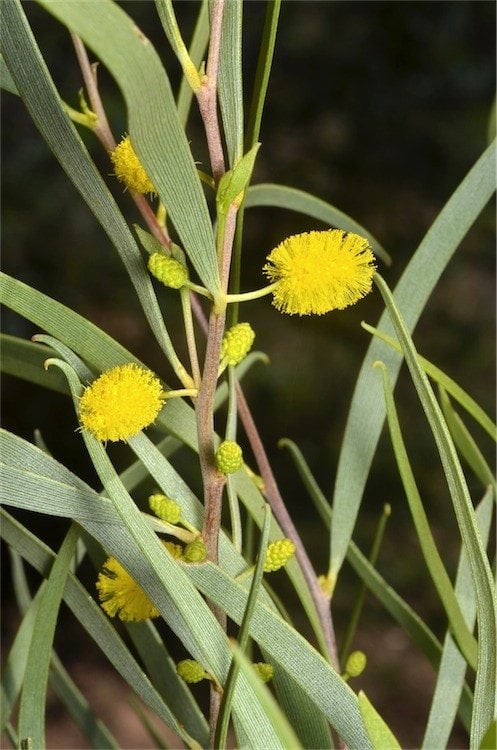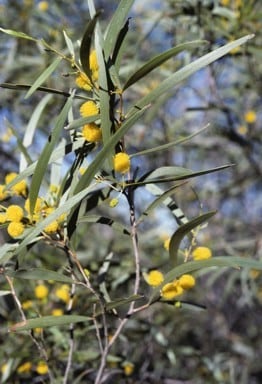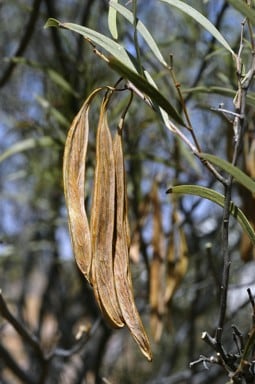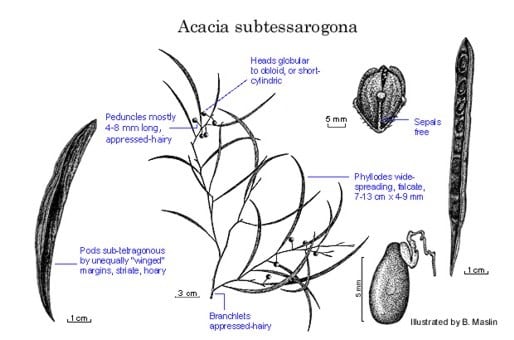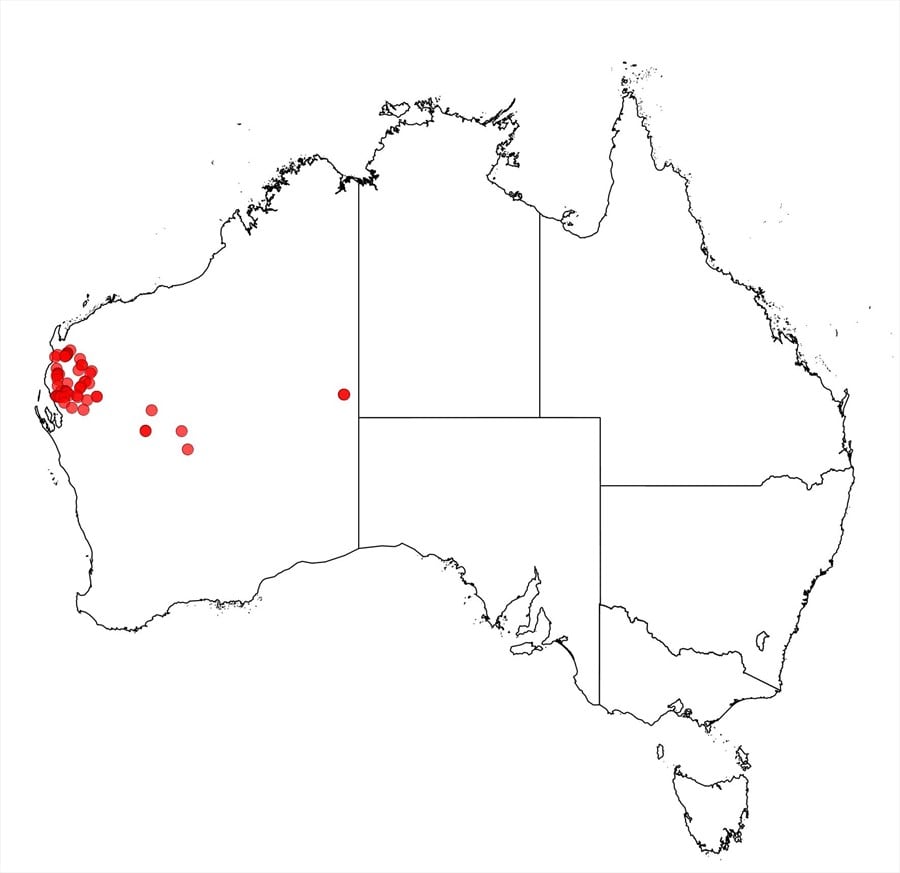Acacia subtessarogona Tindale & Maslin
WATTLE
Acacias of Australia
Family
Fabaceae
Distribution
Occurs in the extreme west of W.A. between 23°S and 25°S latitude with an outlier near Wiluna, W.A.
Description
Tree to 8 m tall. Branchlets ribbed, densely appressed-pubescent between ribs. Phyllodes narrowly elliptic, 7–13 cm long, (3–) 4–9 mm wide, longitudinally striate with appressed hairs between ribs; midrib occasionally more prominent. Inflorescences 1–5 in axils; peduncles 4–8 (–12) mm long; heads capitate to shortly spicate, 6–12 mm long. Flowers 5-merous; sepals extremely narrow, c. 1 mm long, free, pubescent with pale yellow hairs; corolla c. 2 mm long; stamens c. 2.5 mm long; ovary with dense minute scale-like hairs. Pods not stipitate, flat, straight, depressed tetragonous in section, to 12 cm long, c. 7 mm wide, 2–3 mm thick, coriaceous, grey, hoary, with irregular somewhat anastomosing ribs, dehiscent. Seeds longitudinal, oblong, 5–6.5 mm long, 3–3.5 mm wide; aril small, obliquely terminal, pileate, fawn.
Habitat
Commonly occurring on red loamy soil in low-lying areas often with Acacia sclerosperma and A. tetragonophylla or less frequently on rocky ground with A. ancistrocarpa.
Specimens
W.A.: ‘Winning Pool’ Stn, 53 km S of Barradale on North West Coastal Hwy, B.R.Maslin 2768 (BRI, PERTH).
Notes
Although compared with A. brachystachya in the protologue, and having phyllodes and flowers that resemble some of the A. aneura complex of species, it is readily distinguished by its unusual pods. Perhaps some affinity with A. atopa.
FOA Reference
Data derived from Flora of Australia Volumes 11A (2001), 11B (2001) and 12 (1998), products of ABRS, ©Commonwealth of Australia
Author
Minor edits by J.Reid & J.Rogers
L.Pedley
This identification key and fact sheets are available as a mobile application:
URL: https://apps.lucidcentral.org/wattle/
© Copyright 2018. All rights reserved.
